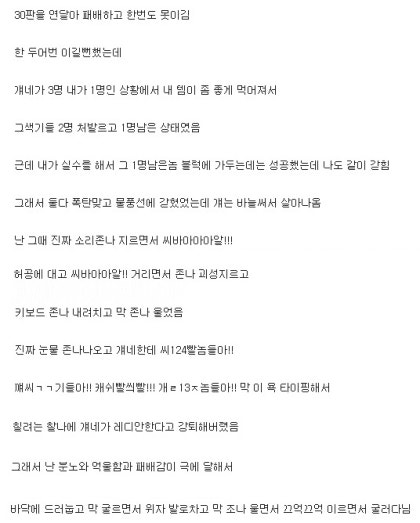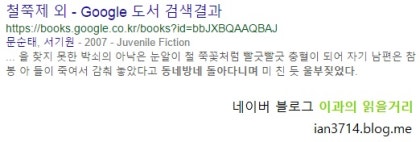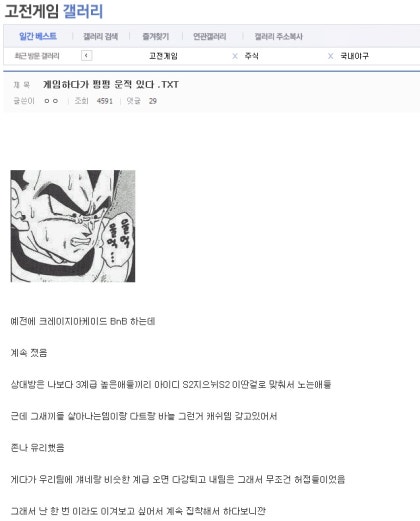광광울었다
광광울었다의 의미
“광광울었다”는 매우 강한 기쁨이나 흥분을 나타내는 표현입니다. 이 표현은 평소에 감정을 많이 드러내지 않는 사람들 중에서도 사용하는 경우가 많습니다. 또한, 이 표현은 단순한 기쁨이나 흥분뿐만 아니라, 불안감이나 두려움에 대해서도 사용될 수 있습니다.
광광울었다의 어원
“광광울었다”라는 표현은 소리내어 울음을 터뜨린다는 의미와 함께, 형용사 “광”이라는 단어와의 조합으로 이루어졌습니다. “광”은 밝은 색이나 눈부신 것을 나타내는 형용사로, 이 단어와 함께 사용되면, 강한 보랏빛이나 붉은색과 같이 밝은 색감을 가진 것을 떠올리게 합니다.
광광울었다의 사용 예
“광광울었다”는 다양한 상황에서 사용될 수 있습니다. 예를 들어, 승리한 순간이나 좋은 소식을 받았을 때, 강한 기쁨을 나타내는 데에 사용될 수 있습니다. 또한, 새로운 것을 배우거나, 새로운 경험을 할 때, 흥분과 기쁨을 동시에 느낄 때에도 사용됩니다.
그리고, “광광울었다”는 상대방의 말이나 행동에 대해서도 사용될 수 있습니다. 예를 들어, 연인이 뜻밖의 선물을 주었을 때, 혹은 친구의 의외의 기쁜 소식을 들었을 때, 놀라움과 감동으로 인해 이 표현을 사용할 수 있습니다.
광광울었다와 유사한 표현
“광광울었다”와 유사한 표현으로 “오열하다”, “울며기떨다”가 있습니다. “오열하다”는 기쁨이나 슬픔 등 강한 감정을 느끼며 울기 시작하는 것을 나타내는 표현입니다. “울며기떨다”는 눈물을 흘리면서 몸을 흔드는 것을 의미합니다.
광광울었다의 감정 표현 상세히 알아보기
“광광울었다”는 기쁨이나 흥분을 나타내는 것이지만, 이 감정의 정확한 표현 방법은 사람마다 다릅니다. 어떤 사람은 노래 부르거나 춤을 추면서 표현할 수 있고, 어떤 사람은 단순히 손뼉을 치며 기쁨을 나타낼 수 있습니다.
또한, “광광울었다”는 감정의 정도에 따라 다른 의미를 가질 수 있습니다. 가장 강한 기쁨과 흥분을 나타내는 것이지만, 때로는 불안감이나 두려움을 나타내기도 합니다. 그러므로 이 표현을 사용할 때, 감정에 적합한 상황에서 사용하는 것이 중요합니다.
광광울었다를 적절히 사용하기 위한 팁
“광광울었다”는 다양한 상황에서 사용될 수 있지만, 적절한 상황에서 사용하는 것이 중요합니다. 일반적으로, 이 표현은 기쁨과 흥분을 나타내기 위해 사용됩니다. 하지만, 특정 상황에서는 그리 적절하지 않은 표현일 수 있으므로 신중하게 사용하는 것이 좋습니다.
또한, 이 표현을 사용할 때에는 주변 사람들의 반응에 대해서도 주의해야 합니다. 너무 큰 소리로 울음을 터뜨리거나, 주변을 방해할 정도로 춤을 추는 것은 좋지 않습니다. 현재 상황에 맞는 적절한 감정 표현을 사용하는 것이 중요합니다.
광광울었다와 관련한 음악, 영화, 드라마 속 사용 상황 분석
“광광울었다”는 음악, 영화, 드라마에서도 종종 사용됩니다. 가장 대표적인 예는 서태지와 아이들의 노래 “광광우럭따”입니다. 이 노래는 1990년대 초반에 인기를 끌었으며, 광광울었다라는 표현이 노래 가사에 사용되어 대중들의 관심을 받았습니다.
또한, 영화나 드라마에서도 “광광울었다”라는 표현이 종종 등장합니다. 예를 들어, 드라마 “미남이시네요”에서는 주인공이 사랑을 느낄 때 “광광울었다”라는 표현을 사용합니다. 이 드라마에서 이 표현은 결국 사랑에 빠지는 친구들의 기쁨과 흥분을 나타내기 위해 사용됩니다.
FAQs
Q: 광광울었다를 사용할 때 어떤 형태로 사용하는 것이 좋은가요?
A: “광광울었다”는 주로 명사나 동사로 사용됩니다. 예를 들어, “나는 기쁨에 광광울었다” 또는 “그들은 놀라움에 광광울었다”와 같은 형태로 많이 사용됩니다.
Q: 광광울었다와 “안달이다”란 표현이 어떤 차이점이 있나요?
A: “안달이다”는 기쁨이나 흥분은 있지만, 조금 불안감이나 두려움의 요소가 더 장악하고 있는 것을 의미합니다. 반면에, “광광울었다”는 순수하게 기쁨이나 흥분을 나타내는 것입니다.
사용자가 검색한 키워드: 광광울었다 광광우럭따 이모티콘, 관광, 바머 뜻, 던파 엘레멘탈 바머 무기, 우럭 양식, 윾 뜻, 우럭 크기, 우럭 습성
Categories: Top 25 광광울었다
예상컨대 20·30대들 광광 울면서 들을 추억의 감성 노래 모음🎧 | PLAYLIST
여기에서 자세히 보기: c3.castu.org
광광우럭따 이모티콘
광광우럭따 이모티콘의 유래
광광우럭따 이모티콘의 유래는 2007년 스마트폰 앱인 ‘카톡’에서 시작되었습니다. 당시 카톡 이모티콘 작가였던 유아팀(YoA Team)이 창작한 이모티콘이었습니다. 이모티콘의 이름은 ‘키엘’로 지어졌습니다. 당시 ‘키엘’ 이모티콘이 인기를 얻어 다른 이모티콘들과 함께 카톡에서 유행하게 되었습니다.
하지만 ‘키엘’ 이모티콘은 점점 많은 작가들이 사용하게 된다는 문제가 발생하였습니다. 이에 대한 대안으로 유아팀 작가들은 2011년 새로운 이모티콘을 출시하게 됩니다. 그리고 그 중 하나가 광광우럭따 이모티콘입니다.
광광우럭따 이모티콘의 특징
광광우럭따 이모티콘은 귀여운 고양이가 등장하는 것으로 유명합니다. 이 고양이는 깜찍한 눈과 고개를 숙이고 있으며 “으르렁”이라는 소리를 내며 움직입니다. 이 이모티콘은 일상에서 웃음을 주는 캐릭터 중 하나로 사랑받습니다.
또한, 광광우럭따 이모티콘은 다양한 상황에서 사용할 수 있는 이모티콘입니다. 예를 들어, 당황스러운 상황에서 ‘오!?’ 라는 말과 함께 사용하면 매우 귀여운 느낌을 줍니다. 또한, 놀란 표현을 하고자 할 때도 매우 유용하게 사용할 수 있습니다.
광광우럭따 이모티콘의 인기
광광우럭따 이모티콘은 한국에서 가장 인기 있는 이모티콘 중 하나로 꼽힙니다. 이 이모티콘은 매우 귀여운 캐릭터를 가지고 있으며, 다양한 상황에서 사용할 수 있기 때문입니다.
특히, 광광우럭따 이모티콘은 한국 문화에 잘 맞는 이모티콘입니다. 한국 문화에서는 고양이를 좋아하는 사람들이 매우 많기 때문에, 이 이모티콘도 매우 사랑받습니다.
또한, 광광우럭따 이모티콘은 다른 이모티콘들과 비슷한 표현을 하지 않기 때문에, 많은 사람들의 호감을 받기도 합니다.
FAQs
Q: 광광우럭따 이모티콘은 왜 인기가 있나요?
A: 광광우럭따 이모티콘은 매우 귀여운 캐릭터를 가지고 있으며, 다양한 상황에서 사용할 수 있기 때문입니다.
Q: 광광우럭따 이모티콘은 어떤 상황에서 사용하면 좋을까요?
A: 광광우럭따 이모티콘은 다양한 상황에서 사용할 수 있습니다. 예를 들어, 당황한 상황에서 ‘오!?’ 라는 말과 함께 사용하면 매우 귀여운 느낌을 줍니다. 또한, 놀란 표현을 하고자 할 때에도 매우 유용하게 사용할 수 있습니다.
Q: 광광우럭따 이모티콘이 다른 이모티콘과 어떻게 다른가요?
A: 광광우럭따 이모티콘은 다른 이모티콘들과 비슷한 표현을 하지 않기 때문에, 많은 사람들의 호감을 받기도 합니다.
Q: 언제부터 광광우럭따 이모티콘이 인기가 있었나요?
A: 광광우럭따 이모티콘은 2011년에 처음 출시되었으며, 한국에서 가장 인기 있는 이모티콘 중 하나로 꼽힙니다.
Q: 이모티콘을 사용할 때 주의할 점은 무엇인가요?
A: 이모티콘을 사용할 때에는 모든 상황에서 사용하는 것이 적절하지 않다는 것을 기억해야 합니다. 또한, 상대방의 감정을 해치지 않도록 조심스럽게 사용해야 합니다.
Q: 광광우럭따 이모티콘은 외국에서도 인기가 있나요?
A: 광광우럭따 이모티콘이 대한민국 이외의 다른 나라에서 인기가 있는 지는 정확히 알 수 없지만, 한국에서는 매우 인기 있는 이모티콘 중 하나입니다.
광광우럭따 이모티콘은 다양한 상황에서 사용할 수 있으며 매우 귀여운 캐릭터를 가지고 있습니다. 이 이모티콘은 한국에서 매우 인기가 있으며, 국내 이모티콘 시장에서는 매년 베스트 이모티콘에 선정되는 등, 큰 사랑을 받고 있습니다. 이모티콘을 사용할 때에는 모든 상황에서 사용하는 것이 적절하지 않다는 것을 기억해야 합니다. 또한, 상대방의 감정을 해치지 않도록 조심스럽게 사용해야 합니다.
관광
One of Korea’s strongest selling points when it comes to tourism is its diverse landscapes. From the bustling cities to the serene countryside, there is something for everyone. Seoul, the capital city, is a must-visit destination for tourists. It is home to many cultural landmarks and famous attractions, such as Gyeongbokgung Palace, Namsan Tower, and the vibrant shopping district of Myeongdong. Additionally, tourists should consider visiting Busan, which is Korea’s second-largest city. Busan is known for its beautiful beaches, delicious seafood, and traditional markets.
Korea’s rich cultural heritage is also a major draw for tourists. The country is steeped in history, and it is home to countless historical landmarks and cultural traditions. Some of the most famous landmarks include the Gyeongju historic area, which was once the capital of the Silla dynasty, and Haeinsa Temple, which is one of the oldest wooden buildings in Korea. Tourists are also encouraged to participate in traditional activities, such as learning how to make kimchi, experiencing a traditional tea ceremony, or wearing a hanbok (a traditional Korean dress).
Perhaps what makes Korea’s tourism experience unique is its focus on modernity and futuristic elements. Korea is consistently pushing boundaries in terms of technology, design, and avant-garde culture. For example, tourists can visit Hongdae, which is a neighborhood known for its trendy restaurants, cafes, and street art. Additionally, tourists can visit Yeouido, which is home to Korea’s stock exchange and boasts some of the tallest buildings in Seoul. These attractions offer a glimpse into Korea’s cutting-edge culture and highlight the country’s drive to innovate.
When planning a trip to Korea, it is important to consider the best time to visit, the type of transportation that will be used, and the necessary preparation for immigration procedures. Korea experiences four distinct seasons, so the timing of a trip can affect the type of activities that tourists can participate in. Generally speaking, the best times to visit are in the spring (March to May) and autumn (September to November), when the weather is mild and there are many seasonal events taking place.
Transportation in Korea is efficient and readily accessible. The country has an extensive public transportation system that includes buses, subways, and trains. Tourists can purchase a T-Money card, which can be used on all modes of transportation, making travel easy and convenient.
Another crucial element of traveling to Korea is preparedness for immigration procedures. Tourists must have a valid passport and may need to apply for a visa depending on their nationality. Additionally, it’s important to note that Korea has strict rules regarding the import of certain items, such as drugs and food products. Tourists should thoroughly review their customs declaration forms to ensure that they are not bringing in any prohibited items.
FAQs:
1. What are some must-see attractions in Korea?
A. Some of the most popular attractions include Gyeongbokgung Palace in Seoul, the ancient city of Gyeongju, and the Haeinsa Temple in the south of Korea. Additionally, tourists should consider exploring traditional markets and trying Korean food, such as bibimbap and kimchi.
2. When is the best time to visit Korea?
A. The best time to visit Korea is in the spring (March to May) or autumn (September to November) when the weather is mild and there are many seasonal events taking place. Summer can be hot and humid, and winter can be cold and snowy.
3. What is the transportation system like in Korea?
A. Korea has an extensive public transportation system that includes buses, subways, and trains. Tourists can purchase a T-Money card, which can be used on all modes of transportation, making travel easy and convenient.
4. Do I need a visa to travel to Korea?
A. It depends on your nationality. Please check with the Korean embassy or consulate in your home country for more information on visa requirements.
5. Are there any prohibited items that I should not bring with me to Korea?
A. Yes, Korea has strict rules regarding the import of certain items, such as drugs and food products. Tourists should thoroughly review their customs declaration forms to ensure that they are not bringing in any prohibited items.
In conclusion, Korean tourism is a vibrant and exciting experience that offers something for everyone. Whether you’re interested in exploring traditional culture, modern landmarks, or natural landscapes, Korea has it all. By planning ahead and being prepared, tourists can ensure that they have a safe and enjoyable trip to this wonderful country.
바머 뜻
In its simplest translation, 바머 뜻 can be interpreted as “unexpected” or “out of the blue”. However, the phrase can have many different meanings depending on the context. It can be used to describe a surprise gift from a friend, an unplanned encounter with someone you haven’t seen in a long time, or even an unexpected twist in a movie or book.
The phrase has become so commonplace in Korean society that it is often used as a slang expression. It can be used as a way to express amazement, excitement, or disbelief. In some cases, it can even be used to express frustration or disappointment.
If you’re interested in learning more about 바머 뜻 and its usage in Korean culture, this article will provide you with an in-depth understanding of its meaning and different contexts in which it can be used.
Meaning of 바머 뜻
The literal translation of 바머 뜻 is “half-headed”, which might not make much sense in English. However, in Korean, the phrase has a more nuanced meaning. It is often used to describe a situation or outcome that is unexpected or surprising.
For example, if you receive a gift from someone unexpectedly, you might say “바머 뜻이었네” (bamer tteusiyeosseune), which can be translated to “that was unexpected”.
The phrase can also be used in situations where something is not quite what you expected. For example, if you go to a restaurant expecting to order your favorite dish, but find out that it’s no longer on the menu, you might say “바머 뜻이네” (bamer tteusine), which can be translated to “that’s unexpected”.
In general, 바머 뜻 can be used to describe any situation that is unexpected, surprising, or out of the blue.
Usage of 바머 뜻
The usage of 바머 뜻 can vary depending on the context. Here are some common ways that the phrase is used:
1. To express surprise or excitement
바머 뜻 can be used to express surprise or excitement in a positive way. For example, if you hear that your favorite band is going to perform in your city, you might exclaim “바머 뜻이야!” (bamer tteusiya!), which can be translated to “that’s unexpected!”
Similarly, if you win a lottery or a raffle, you might say “바머 뜻이었어!” (bamer tteusiyeosseo!), which can be translated to “that was unexpected!”.
2. To express frustration or disappointment
바머 뜻 can also be used to express frustration or disappointment in a negative way. For example, if you find out that a friend has canceled plans at the last minute, you might say “바머 뜻이잖아” (bamer tteusijana), which can be translated to “this is unexpected”.
Similarly, if you are waiting in a long line at a store, and the cashier closes the register, you might say “바머 뜻이야” (bamer tteusiya), which can be translated to “that’s unexpected!”.
3. To describe a sudden change in circumstances
바머 뜻 can also be used to describe a sudden change in circumstances. For example, if you are driving to work and encounter an unexpected traffic jam, you might say “바머 뜻이야” (bamer tteusiya), which can be translated to “that’s unexpected!”.
Alternatively, if you are in the middle of a conversation, and someone suddenly interrupts you, you might say “바머 뜻이네” (bamer tteusine), which can be translated to “that’s unexpected”.
4. To express confusion or uncertainty
바머 뜻 can also be used to express confusion or uncertainty. For example, if someone says something to you that you don’t understand, you might respond with “바머 뜻이 어디야?”(bamer tteusi eodiya?), which can be translated to “what does that mean?”.
Similarly, if someone asks you a question that you don’t know the answer to, you might say “바머 뜻인지 잘 모르겠어” (bamer tteusinji jal moreugesseo), which can be translated to “I’m not sure what that means”.
FAQs about 바머 뜻
1. Is 바머 뜻 used widely in Korean culture?
Yes, 바머 뜻 is a very common phrase in Korean culture. It is used both in everyday conversations and in various forms of media.
2. Can 바머 뜻 be used in formal situations?
No, because 바머 뜻 is considered a slang expression, it is not appropriate to use in formal situations such as business meetings or official presentations.
3. Does 바머 뜻 have any negative connotations?
No, 바머 뜻 itself does not have any negative connotations. However, the context in which it is used can determine whether it has a positive or negative implication.
4. Are there any other phrases with similar meanings?
Yes, there are a few other Korean phrases that have similar meanings to 바머 뜻. These include “갑자기” (gabjagi), “쉽사리” (swipsari), and “예기치 않게” (yegichi ange).
5. How can I learn more about the usage of 바머 뜻?
The best way to learn more about the usage of 바머 뜻 is through practice and observation. Listen to how native speakers use the phrase in different situations and try to use it yourself in appropriate contexts. Additionally, you can consult a Korean language textbook or online resource for more information.
주제와 관련된 이미지 광광울었다

광광울었다 주제와 관련된 이미지 28개를 찾았습니다.











![Vlog] 노들섬에서 김수영 콘서트 보다가 광광 울었다 | 김수영 Episode | 용산효뜨 | 211128 - YouTube Vlog] 노들섬에서 김수영 콘서트 보다가 광광 울었다 | 김수영 Episode | 용산효뜨 | 211128 - Youtube](https://i.ytimg.com/vi/jShQIRgJkGc/maxresdefault.jpg)
Article link: 광광울었다.
주제에 대해 자세히 알아보기 광광울었다.
- 광광 우럭따 – 나무위키
- ‘광광 울었다’는 자제해주세요. – 클리앙
- 광광 우럭따 뜻이 뭔가요?? : MLBPARK
- 광광 우럭따 8ㅅ8 뜻 – 인터넷 신조어 : 네이버 블로그
- 광광 우럭따 뜻을 아세요? – 토산의작은공간 – 티스토리
- 3주만에 머리나는 발모제 개발! 제목만 보고 “광광 우럭따”
- 햇살 피는 나무 – Kết quả Tìm kiếm Sách của Google
더보기: blog https://c3.castu.org/danh-muc/lam-dep